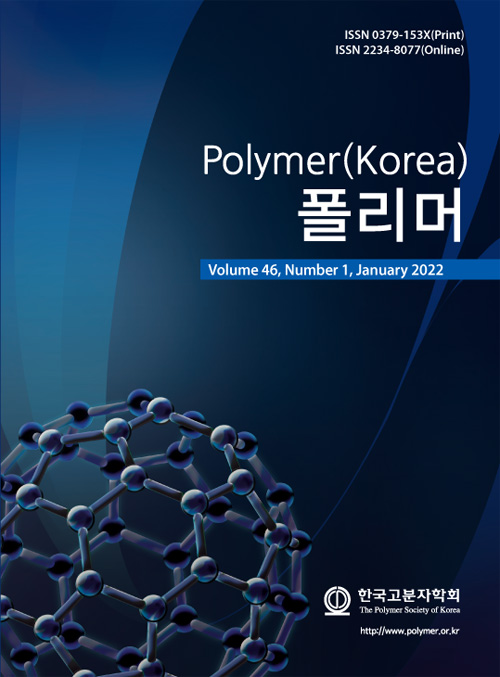- Comfort Property of the Polyurethane Foams Including EPS Filler Particles
Department of Chemical Engineering, University of Seoul, 163 Seoulsiripdae-ro, Dongdaemun-gu, Seoul 02504, Korea
- 발포 폴리스티렌 충전제가 첨가된 폴리우레탄 폼의 안락특성
서울시립대학교 화학공학과
Reproduction, stored in a retrieval system, or transmitted in any form of any part of this publication is permitted only by written permission from the Polymer Society of Korea.
Polyurethane (PU) foams are widely used for seat cushioning materials in automobiles. The comfort properties of PU foams can be enhanced by adding various fillers to the base formulations. In this study, physical properties of PU foams were investigated by varying the content of expandable polystyrene (EPS) beads. EPS beads rarely changed the morphology (pore size, cavity size, pore ratio, and open porosity) of PU foams, but the sag factor and hysteresis loss increased as EPS beads were added. Especially, the stress values of the EPS-filled PU foams were much higher than those of the PU foams previously reported at a similar level of hysteresis loss. Therefore, it is promising to apply the EPS filler particles in manufacturing the PU foams for automotive seat applications.
폴리우레탄 폼은 자동차 산업에서 시트 쿠션재로 널리 사용되고 있다. 폴리우레탄 폼의 안락 특성은 기본 처방에 다양한 충전제를 추가하여 향상시킬 수 있다. 본 연구에서는 발포 폴리스티렌(expandable polystyrene, EPS) 충전제의 함량을 변화시켜 EPS가 폴리우레탄 폼의 물리적 특성에 미치는 영향을 조사하였다. EPS 충전제가 폴리우레탄 폼의 형태학(공동 크기, 미세구멍 크기, 미세구멍 비율, 미세구멍 개폐도)에 미치는 영향은 미미하였으나, EPS 함량이 증가함에 따라 꺼짐인자와 이력손실은 증가하였다. 특히, 공동 크기에 비하여 상대적으로 큰 EPS 충전제가 폴리우레탄 폼을 지지해주기 때문에 이미 보고된 문헌들의 다양한 이력손실 값들에서 응력을 비교할 경우 EPS가 첨가된 폴리우레탄 폼이 매우 우수한 응력 값을 나타냈다. 따라서 향상된 안락특성으로 인해 자동차 시트재로의 적용 가능성이 매우 크다고 할 수 있다.
Keywords: polyurethane foam, sag factor, hysteresis loss, expanded polystyrene.
- Polymer(Korea) 폴리머
- Frequency : Bimonthly(odd)
ISSN 0379-153X(Print)
ISSN 2234-8077(Online)
Abbr. Polym. Korea - 2023 Impact Factor : 0.4
- Indexed in SCIE
 This Article
This Article
-
2022; 46(1): 107-112
Published online Jan 25, 2022
- 10.7317/pk.2022.46.1.107
- Received on Oct 6, 2021
- Revised on Nov 16, 2021
- Accepted on Nov 16, 2021
 Correspondence to
Correspondence to
- Jung Hyeun Kim
-
Department of Chemical Engineering, University of Seoul, 163 Seoulsiripdae-ro, Dongdaemun-gu, Seoul 02504, Korea
- E-mail: jhkimad@uos.ac.kr









 Copyright(c) The Polymer Society of Korea. All right reserved.
Copyright(c) The Polymer Society of Korea. All right reserved.